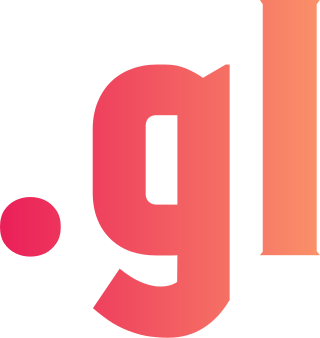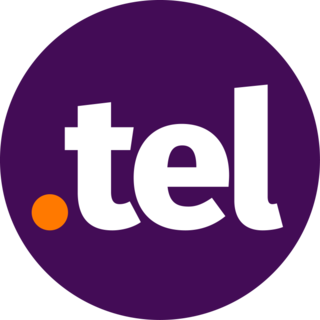Domain name scams are types of Intellectual property scams or confidence scams in which unscrupulous domain name registrars attempt to generate revenue by tricking businesses into buying, selling, listing or converting a domain name. The Office of Fair Trading in the United Kingdom has outlined two types of domain name scams which are "Domain name registration scams" and "Domain name renewal scams".
Domain name speculation, popular as domaining in professional jargon, is the practice of identifying and registering or acquiring generic Internet domain names as an investment with the intent of selling them later for a profit.
The Anticybersquatting Consumer Protection Act (ACPA), 15 U.S.C. § 1125(d),(passed as part of Pub. L.Tooltip Public Law 106–113 ) is a U.S. law enacted in 1999 that established a cause of action for registering, trafficking in, or using a domain name confusingly similar to, or dilutive of, a trademark or personal name. The law was designed to thwart "cybersquatters" who register Internet domain names containing trademarks with no intention of creating a legitimate web site, but instead plan to sell the domain name to the trademark owner or a third party. Critics of the ACPA complain about the non-global scope of the Act and its potential to restrict free speech, while others dispute these complaints. Before the ACPA was enacted, trademark owners relied heavily on the Federal Trademark Dilution Act (FTDA) to sue domain name registrants. The FTDA was enacted in 1995 in part with the intent to curb domain name abuses. The legislative history of the FTDA specifically mentions that trademark dilution in domain names was a matter of Congressional concern motivating the Act. Senator Leahy stated that "it is my hope that this anti-dilution statute can help stem the use of deceptive Internet addresses taken by those who are choosing marks that are associated with the products and reputations of others".

.ba is the Internet country code top-level domain (ccTLD) for Bosnia and Herzegovina. It is administered by the University Teleinformation Center.
.sa is the Latin alphabet Internet country code top-level domain (ccTLD) of Saudi Arabia. Domains of this type can be registered through SaudiNIC, a department of the Communications and Information Technology Commission. The Arabic alphabet ccTLD of Saudi Arabia is السعودية.

.dz is the country code top-level domain (ccTLD) for Algeria.

.gl is the country code top-level domain (ccTLD) in the Domain Name System of the Internet for Greenland. The domain is available for Internet services worldwide and registrations are handled by ICANN-accredited domain name registrars.

.ke is the Internet country code top-level domain (ccTLD) for Kenya.
.kr is the Internet country code top-level domain (ccTLD) for the Republic of Korea. Registrations are processed via registration agents.

.kz is the Internet country code top-level domain (ccTLD) for Kazakhstan.
.no is the Internet country code top-level domain (ccTLD) for Norway. Norid, the domain name registry, is based in Trondheim, is owned by the state-owned Uninett and operates under supervision of the Norwegian Communications Authority. As of December 24, 2022 there were 843,749 registered .no domains. Organizations with a presence in Norway and registration at the Brønnøysund Register Centre are limited to 100 domains each. Individuals residing in Norway may register in the second-level domain priv.no and, as of June 17, 2014, directly under .no. Other second-level domains exist for organizations of certain types, such as municipalities and schools. The strict regulations have resulted in near-absence of cybersquatting and warehousing.

.np is the Internet country code top-level domain (ccTLD) for Nepal. It is administered by Mercantile Communication Pvt Ltd.

.pg is the Internet country code top-level domain (ccTLD) for Papua New Guinea.

The domain name .tel is a top-level domain (TLD) in the Domain Name System (DNS) of the Internet. It was approved by ICANN as a sponsored top-level domain, and is operated by Telnic. Telnic announced in January 2011 that over 300,000 domains had been registered since the start of general availability on 24 March 2009. A substantial drop of mostly IDN .tel's occurred at the beginning of 2014. The total number of registered websites under .tel as of 9 October 2023 is approximately 43,227.

F-ATPase, also known as F-Type ATPase, is an ATPase/synthase found in bacterial plasma membranes, in mitochondrial inner membranes, and in chloroplast thylakoid membranes. It uses a proton gradient to drive ATP synthesis by allowing the passive flux of protons across the membrane down their electrochemical gradient and using the energy released by the transport reaction to release newly formed ATP from the active site of F-ATPase. Together with V-ATPases and A-ATPases, F-ATPases belong to superfamily of related rotary ATPases.
InterPro is a database of protein families, protein domains and functional sites in which identifiable features found in known proteins can be applied to new protein sequences in order to functionally characterise them.

ATPase, subunit C of Fo/Vo complex is the main transmembrane subunit of V-type, A-type and F-type ATP synthases. Subunit C was found in the Fo or Vo complex of F- and V-ATPases, respectively. The subunits form an oligomeric c ring that make up the Fo/Vo/Ao rotor, where the actual number of subunits vary greatly among specific enzymes.

ATP synthase F1 subunit alpha, mitochondrial is an enzyme that in humans is encoded by the ATP5F1A gene.

A trademark is a type of intellectual property consisting of a recognizable sign, design, or expression that identifies a product or service from a particular source and distinguishes it from others. A trademark owner can be an individual, business organization, or any legal entity. A trademark may be located on a package, a label, a voucher, or on the product itself. Trademarks used to identify services are sometimes called service marks.
Cybersquatting is the practice of registering, trafficking in, or using an Internet domain name, with a bad faith intent to profit from the goodwill of a trademark belonging to someone else.












